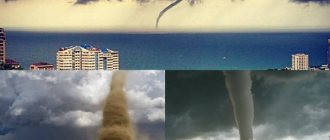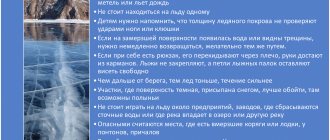We can talk a lot about what volcanoes are and what their role is in the life of the planet. Only two facts remain undoubted: the volcano is a very beautiful and at the same time extremely dangerous natural phenomenon for all living things. In essence, this is a huge “powder keg”, ready to explode at any moment without any apparent reason.
What is a volcano
The volcano belongs to the category of geological formations. It may have a structure in the form of channels or cracks in the earth's crust. Through these channels, hot magma erupts onto the surface of the planet. The faithful companions of a volcanic eruption are volcanic ash, liquid vapors, hot gases, and rock fragments.
Basically, all volcanoes are divided into:
• Extinct. They have external signs of volcanoes, but are not mentioned as active in the observable history of Mankind. • Asleep. Haven't erupted for a long time. • Active. Periodically erupting.
They are also divided according to shape into:
• Central. They erupt from one central vent. • Cracked. They erupt from irregularly shaped fissures or multiple vents.
The volcanic apparatus consists of:
• Magma chamber (base from the mantle side of the planet). • Outlet channel (vent). • Cone (mountain, hill, consists of eruption products). • Crater (represents a depression in the upper part of a cone with a vent).
Typically, volcanoes are located in areas of tectonic faults along the edges of tectonic plates. In Russia, such areas are located in Kamchatka (for example, the active Klyuchevskaya Sopka volcano).
Why are volcanoes dangerous for humanity?
What is a volcanic eruption?
Under the layer of the earth's crust there is molten magma, which, under pressure, tries to make its way to the surface of the earth. Where the crust is very weak, magma comes out and an eruption occurs. Also, the activity of volcanoes is directly related to solar activity. The fact is that when solar plasma emissions occur, magnetosphere disturbances occur, which affect the behavior of the Earth's core, and this, in turn, affects volcanism.
Why are they dangerous?
The danger of volcanoes is that they are capable of eruption and are unpredictable. Especially dormant volcanoes, which at any moment, out of the blue, can burst out with lava. Those people who suddenly decided to settle on the volcanic slopes or in close proximity to them risk dying at any moment, unless of course they do not have time to evacuate.
What are dangerous volcanoes?
Around 1400 BC, a volcanic eruption occurred on the island of Santorini, which destroyed the Minoan civilization.
The well-known Vesuvius, which buried Pompeii and, according to some sources, the mythical Atlantis.
In 535 and 536, due to two Indonesian volcanoes, first Tavurwur in Papua New Guinea and then the awakening Krakatoa, a cold snap occurred, a decrease in solar activity due to the release of a huge mass of ash into the atmosphere.
Best articles: List of the highest volcanoes on Earth
There is also the largest volcano on the planet, Yellowstone. This giant erupted for the first time approximately 2.1 million years ago. His strength then was as much as 8 points. It is located in the USA in the state of Wyoming. On the territory of the national park. Once again, and this was already 640 thousand years ago, a volcano caused climate change. Due to his fault, the climate changed, and many species of animals and plants disappeared. Today, some scientists say that he is about to wake up. If an eruption occurs, it could bring global cataclysms across the planet and even the emergence of a new ice age. This is evidenced by the fact that the ground level in the park has risen by 90 cm. In addition, the US government has an official ban on information about earthquakes in Yellowstone, as well as along the New Madrid fault line. Other scientists reject this opinion and believe that the next eruption will occur only in a thousand or even ten thousand years.
I'm done here. More information on the topic of volcanoes can be found by following these links:
- Which volcano do geographers consider to be the oldest on our planet?
- How many volcanoes are there on planet earth and in the world?
Dangers of Volcanoes
The main dangers of volcanoes include:
• Hot lava flows that can burn all living things and cause fires. • Rock fragments ejected from a vent. • Volcanic ash, which can cause death from suffocation, in large quantities, burying cities, causing a “nuclear winter” effect, causing the closure of air traffic, etc. • Mud flows, mudflows, floods, etc. • Possibility of an earthquake with all the ensuing consequences.
What is the danger
A volcanic eruption has several dangerous factors for humans:
- Hot lava flows (magma).
- Rocks and ash may be ejected from craters.
- Often the eruption is accompanied by mud flows and floods.
- A frequent companion to volcanic activity is earthquakes of varying strength.
- Even if the eruption has passed, the danger remains - volcanic ash often causes allergic reactions.
That is why every person, even those living outside the zone of seismic activity, needs to know the rules of behavior during a volcanic eruption. Often on vacation in hot countries - Greece, Bali, India - similar disasters occur. And while local residents, accustomed to them, know how to act, tourists succumb to panic.
Preparing for a volcanic eruption
Preparation for a volcanic eruption is necessary in two cases:
1. If you live in a dangerous area or along tectonic faults. 2. If you plan to travel to areas with potential for volcanic activity
The main rule of preparation is awareness. Stay connected to be notified when an eruption begins. If such a warning is received, you should:
• Warn your friends. • Collect valuables and documents. • Close the house (windows, doors, technological openings). • Will put the car in the garage. • Keep animals indoors. • Provide a portable supply of food, water, communication devices, lighting and spare batteries (for at least 3 days).
Be prepared to immediately leave the danger zone if special services require you to do so. The most important thing is don't panic. This is easier said than done, but in most cases it is panic that causes death, not only of the panicker, but also of his loved ones and those around him.
While at home
Let's consider the rules of conduct during a volcanic eruption point by point if the disaster finds people in their home:
- Close windows, doors, ventilation.
- You should not panic or try to escape. It is very important not to leave the shelter.
- If one of your relatives is currently at work or at an educational institution, you should not try with all your might to find him. It's better to stay in a safe haven.
- Turn on the radio and listen to messages from the Ministry of Emergency Situations. All information about the course of the disaster and the actions of the population will be transmitted.
Evacuation may be required, so be prepared to leave the shelter when instructed to do so by radio.
Actions during a volcanic eruption
If the eruption caught you on the way:
• Protect your head and body from possible debris. • Protect your eyes and respiratory system. • Avoid low-lying areas due to the possibility of mudflows and lava. • If you cannot recognize the situation, do not look for shelter, but go as far as possible: the volcano is unpredictable, and what you see may only be the beginning of a large-scale natural disaster (cataclysm).
Ashfall
Another danger that accompanies volcanic activity is ash. You need to do this:
- Carefully close all windows and doors in the house and caulk large cracks.
- Don't go outside unless absolutely necessary.
- If you need to go outside, you should not bring it into the house.
- If ash gets into the house, all people should immediately put on respirators or cotton-gauze bandages. If it was not possible to prepare these protective equipment in advance, a towel will protect the respiratory system.
- Household appliances are covered with film or thick cloth; they cannot be used during an ash fall.
After the ashfall is over, you should clean the house, after putting on a cotton-gauze bandage. It is very important to immediately clear the roof of ash and other volcanic emissions; they are often quite heavy and can cause collapse.
What you need to know about volcanic eruptions
• On average, the speed of lava is 35-40 km per hour. That is, you can try to get away from her, but you won’t be able to escape. • If you can't leave, try to find shelter on a hill. • Some people advise diving into a body of water. It’s not worth it - magma can break into it and then all living creatures will be cooked along with you. • During eruptions, sulfur dioxide is actively formed. This is a poisonous substance, so wear as much clothing as possible, wrap scarves around your face, wear glasses, etc. • Lava moves along the lowlands, you need to leave it by the shortest route diagonally or perpendicularly, preferably upwards. • Be prepared for fires in your home. • Volcanic ash can damage your vehicle. • Watch the animals. If they begin to leave the area en masse, there may be an eruption soon.
What not to do
We briefly reviewed the rules of behavior during a volcanic eruption. There are some things that should not be done during this disaster:
- Under no circumstances should you hide in basements and cellars; people may be buried under a layer of ash.
- You should also not hide in ravines and gorges if you are caught outside by an eruption, since in the event of a flood, people will be trapped.
- After the eruption, you should not use your car; ash fall can damage the engine.
- If you need to go outside, you should not wear synthetics; under the influence of gases, they can catch fire.
- If a disaster finds a person on the street, you should not lie down on the ground, since heavy poisonous gases are concentrated here, so there is a high risk of poisoning.
These rules of behavior during a volcanic eruption will help you survive and not get hurt. The most important thing is not to panic, to provide assistance to those who need it (the weak, the wounded, pensioners, children). Most often, people living in seismically unstable areas know what needs to be done, so it is better for visitors to consult with them.
VOLCANIC HAZARD
Volcanic eruptions threaten human lives and cause material damage. After 1600, as a result of eruptions and associated mudflows and tsunamis, 168 thousand people died, and 95 thousand people became victims of disease and hunger that arose after the eruptions. As a result of the eruption of the Montagne Pelee volcano in 1902, 30 thousand people died. As a result of mudflows from the Ruiz volcano in Colombia in 1985, 20 thousand people died. The eruption of the Krakatoa volcano in 1883 led to the formation of a tsunami that killed 36 thousand people.
The nature of the danger depends on the action of various factors. Lava flows destroy buildings, block roads and agricultural lands, which are excluded from economic use for many centuries until new soil is formed as a result of weathering processes. The rate of weathering depends on the amount of precipitation, temperature, runoff conditions and the nature of the surface. For example, on the wetter slopes of Mount Etna in Italy, agriculture on lava flows resumed only 300 years after the eruption.
As a result of volcanic eruptions, thick layers of ash accumulate on the roofs of buildings, which threatens their collapse. The entry of tiny ash particles into the lungs leads to the death of livestock. Ash suspended in the air poses a danger to road and air transport. Airports are often closed during ashfalls.
Ash flows, which are a hot mixture of suspended dispersed material and volcanic gases, move at high speed. As a result, people, animals, plants die from burns and suffocation and houses are destroyed. The ancient Roman cities of Pompeii and Herculaneum were affected by such flows and were covered with ash during the eruption of Mount Vesuvius.
Volcanic gases released by volcanoes of any type rise into the atmosphere and usually cause no harm, but some of them may return to the earth's surface in the form of acid rain. Sometimes the terrain allows volcanic gases (sulfur dioxide, hydrogen chloride or carbon dioxide) to spread near the surface of the earth, destroying vegetation or polluting the air in concentrations exceeding permissible limits. Volcanic gases can also cause indirect harm. Thus, the fluorine compounds contained in them are captured by ash particles, and when the latter fall onto the earth's surface, they contaminate pastures and water bodies, causing severe diseases in livestock. In the same way, open sources of water supply to the population can be contaminated.
Mud-stone flows and tsunamis also cause enormous destruction.
When did the eruption happen?
photo from the Internet
Immediately after the eruption, turn on the TV or radio. Local channels will 100% include emergency broadcasts and detailed instructions on what to do, where to run, and how to evacuate from the disaster zone.
In most cases (unless, of course, your paradise house is located directly under a volcano), you should stay at home and tightly close all doors and windows so that the ash does not enter the house. It is very harmful for them to breathe, as it may contain toxic elements.
If during a volcanic eruption you find yourself on the street and very far from home, then you need to look for higher ground, as the ash settles down.
It also happens that an ash emission takes you by surprise and you find yourself in the epicenter. In this situation, you need to turn away from the volcano itself, cover your head with something (at worst, your hands) so that the rain of ash falls less on your body.
And remember, it is strictly forbidden to inhale ashes, since the elements contained in it remain in the lungs forever. They are harmful to the body.
But if you read this article and prepared a backpack with things for an emergency in advance, then there will definitely be a respirator in it. Breathe through it. If not, then use any cloth, preferably wet.
It is also important to protect your eyes, preferably with a mask, but the same sunglasses will do. During a volcanic eruption, you should not jump in puddles
They can be as hot as the lava itself. These are geysers. I have heard many stories from friends where during eruptions people were in their villas and their swimming pools were boiling!
During a volcanic eruption, you should not jump in puddles. They can be as hot as the lava itself. These are geysers. I have heard many stories from friends where during eruptions people were in their villas and their swimming pools were boiling!









